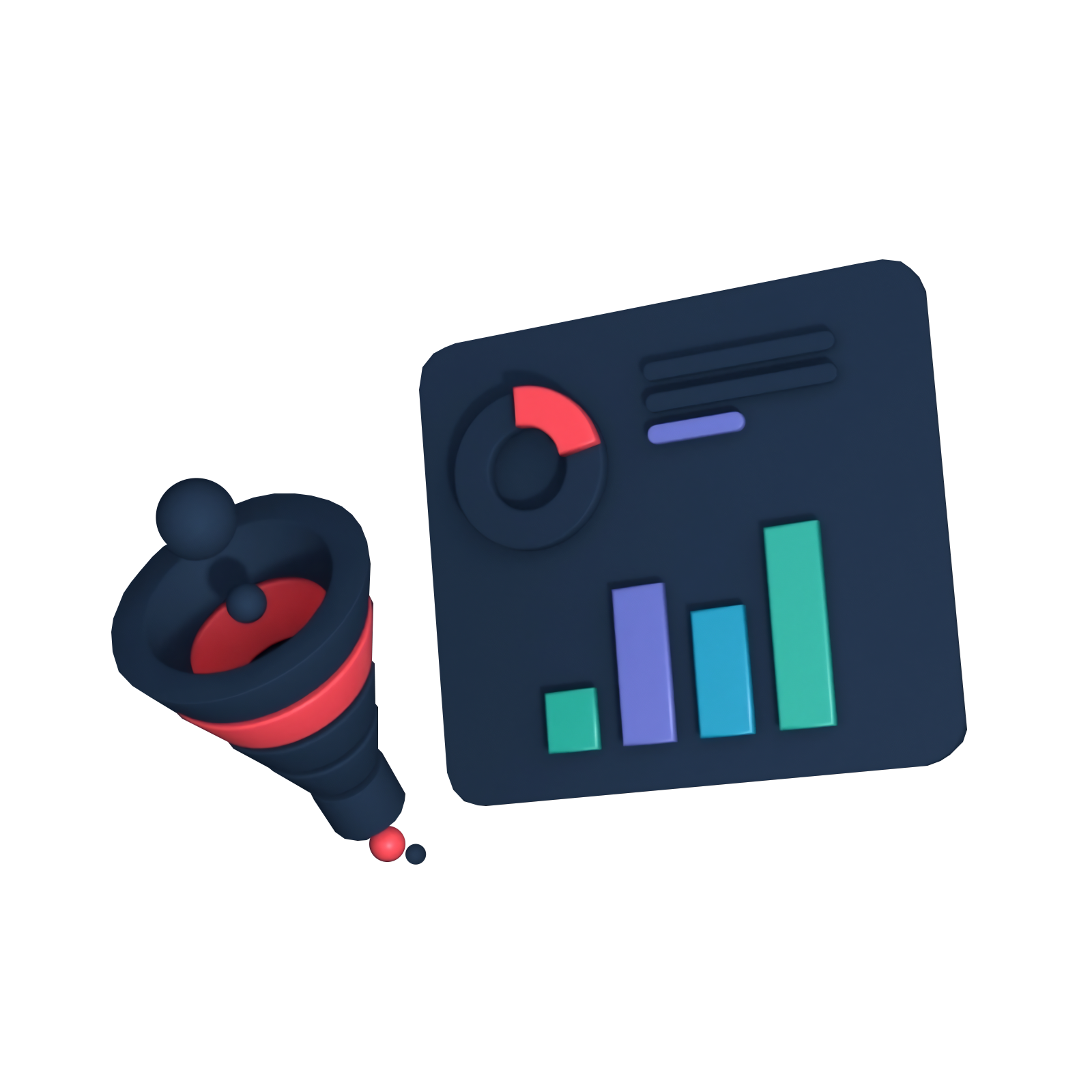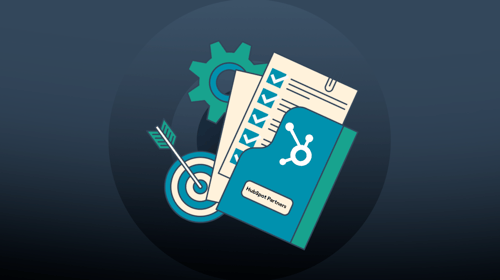In this article, we will discuss the impact of inaccurate sales forecasting, the benefits of accurate sales forecasting, and the key components of quantitative sales forecasting that can help you make informed decisions about your sales strategies and future growth.
Quantitative sales forecasting is a data-driven approach used to project future sales by analyzing historical sales performance alongside measurable variables such as market seasonality, economic indicators, and operational trends.
As a CSO leading a complex organization, you know how critical it is to anticipate demand across multiple regions and business units.
This approach gives you the structured foundation needed to do just that, enabling you to stay ahead of shifts in the market. A reliable sales forecast isn’t just a nice-to-have; it’s what allows you to align revenue expectations with strategic planning. It equips you to make confident, forward-looking decisions across sales execution, budgeting, hiring, and supply chain, all of which demand greater precision as your operations scale.
Conversely, poor forecasting can lead to disruptive downstream effects. Over-forecasting may drive excess production or unutilised capacity, while under-forecasting can result in missed revenue targets, stockouts, and reduced market responsiveness. Both scenarios impact operational efficiency and strategic confidence.
In this article, we’ll explore the consequences of inaccurate forecasting, the strategic advantages of improved accuracy, and the key elements that underpin effective quantitative sales forecasting, helping you build more resilient, insight-led growth strategies.
Why you need both: Quantitative forecasting vs qualitative forecasting
Sophisticated sales forecasting isn’t a choice between data and intuition — it’s about combining the strengths of both. Quantitative and qualitative forecasting each play a distinct role in building a reliable, forward-looking view of revenue.
The most effective commercial organizations integrate both approaches to create forecasts that are not only grounded in performance trends but also responsive to market realities.
- Quantitative forecasting: the data-driven baseline
Quantitative forecasting leverages historical performance and statistical modeling to deliver objective, repeatable insights. It’s particularly effective for organizations with rich, multi-year data sets across geographies, segments, and product lines, enabling pattern recognition, seasonality detection, and benchmarking at scale.
That said, even the most robust quantitative models have limitations. They can miss early signals of change, whether it’s a shift in customer behavior, competitive moves, regulatory shifts, or broader macroeconomic pressures — if those changes haven't yet appeared in the historical data.
- Qualitative forecasting: contextual foresight
Qualitative forecasting brings in the human perspective: insights from go-to-market leaders, strategic planners, and frontline teams who see changes emerging before the data catches up. Whether it's the expected impact of a major product launch, expansion into a new market, or feedback from key accounts, this forward-looking input is essential for pressure-testing the forecast and adapting to fast-moving conditions.
For data-mature organizations, the most resilient forecasting models combine both approaches: using quantitative methods to establish a defensible baseline, then enhancing that foundation with qualitative insight from cross-functional stakeholders.
This ensures forecasts are both data-informed and strategically adaptive, critical in environments where agility and accuracy drive performance.
How high-performing teams get sales forecasting right
Here are six key components that can lead to more accurate, scalable sales forecasts:
1. Enhance forecasting precision with AI-powered models
As data complexity grows, traditional forecasting methods can struggle to scale or adapt. AI-powered forecasting introduces machine learning models that continuously learn from both structured and unstructured data, identifying trends, correlations, and anomalies that may be missed by conventional approaches.
For instance, a company operating in over 15 countries uses an AI model to process thousands of signals, from CRM updates and website activity to macroeconomic data and third-party buying intent. The AI system flags a shift in deal velocity across the APAC region before it’s visible in quarterly reports, prompting leadership to reprioritise sales efforts and adjust hiring plans.
2. Analyze historical data at depth and scale
Understanding past performance is crucial to predicting future outcomes. However, to improve forecast accuracy, it’s essential to move beyond broad sales numbers. By segmenting the data into regions, product categories, buyer personas, and sales stages, companies can uncover patterns that might not be immediately obvious.
Let’s say a regional sales director reviews historical sales data across EMEA for the last three years and discovers that Q2 typically shows a dip in sales, driven by longer procurement cycles in certain sectors like government or education. This insight helps the team adjust their Q2 targets, allocate resources more effectively, and anticipate slower periods in specific markets.
3. Leverage time-series analysis to spot recurring patterns
Time-series analysis is an effective tool for organizations with longer sales cycles or multiple product offerings. It helps you identify patterns and trends over time, such as seasonal demand fluctuations or periodic industry events, making it easier to adjust forecasts proactively.
For instance, a company that sells both software and services tracks monthly sales across these categories. Time-series analysis reveals that their software sales spiked in Q4, often driven by end-of-year budget allocations in the public sector. By anticipating this trend, the sales and operations teams align their resources and prepare targeted marketing campaigns to capitalize on the expected uptick.
4. Use quantitative forecasting techniques like regression and smoothing
Quantitative methods like regression analysis and exponential smoothing provide a more data-driven, reliable basis for predictions. Regression analysis identifies the relationship between key variables (e.g., marketing spend, product price changes, or macroeconomic conditions) and sales outcomes, while exponential smoothing puts more weight on recent data to adapt to sudden shifts in the market.
For example, a North American business development leader uses regression analysis to understand how increased advertising spend affects their deal velocity in the enterprise segment. The model suggests that a 10% increase in ad spend typically correlates with a 5% increase in sales conversions. Using this insight, the team is able to adjust their forecast and plan the next quarter’s budget with greater accuracy.
5. Incorporate external market conditions and macro trends
Internal data alone doesn’t capture the full picture. External factors, such as market shifts, economic changes, and competitor activity, should be factored into forecasts to make them more adaptable and reflective of the current landscape. This is especially crucial for businesses with a global footprint or those operating in highly competitive or volatile industries.
Imagine a company that manufactures luxury goods sees a sudden economic downturn in key European markets. By incorporating regional GDP forecasts, inflation predictions, and consumer sentiment data into their sales models, the forecasting team adjusts their targets, anticipating a dip in demand. This helps them mitigate potential revenue shortfalls and reallocate resources to higher-performing regions.
6. Align sales leadership and front-line teams on forecasting inputs
No forecasting method is foolproof without input from those closest to the pipeline. Sales teams, especially those interacting directly with prospects and clients, provide insights that numbers alone can’t. Regular collaboration between sales leadership and frontline reps ensures that forecasts are not only based on historical data but also on current market conditions and deal health.
Let’s say sales managers conduct monthly pipeline reviews with their teams, discussing the likelihood of closing large deals within a given quarter. For example, one rep notes that a major deal with a multinational client has slowed down due to delayed regulatory approvals, which the CRM data alone doesn’t reflect. By including this real-time insight in the forecast, the sales team can adjust their predictions and avoid overestimating sales in the upcoming quarter.
When these components are integrated into your sales forecasting process and supported by tools like CRM and shared forecasting frameworks, you’ll gain greater clarity and alignment across departments.
Leveraging HubSpot for sales forecasting at scale
Technology alone doesn’t guarantee accurate forecasting, it’s how you implement and operationalise it that makes the difference. At Huble, we work with organizations to build tailored forecasting systems within HubSpot that align with their sales structures, reporting needs, and strategic planning processes.
HubSpot’s CRM provides a flexible foundation for forecasting, but our role is to help configure and extend it so it becomes a reliable source of truth across global teams.
- Aligning forecasting with your pipeline and process: We help businesses design sales pipelines in HubSpot that reflect their real-world buying journeys, whether that includes multiple deal types, approval layers, or regional variations. Forecasts are then tied to these customized pipelines, allowing for more accurate rollups by team, region, or business unit.
- Creating forecasting frameworks that scale: Rather than defaulting to standard forecasting fields or workflows, we build frameworks within HubSpot that mirror your operating model. That might include defining custom forecast categories, setting up governance for how deal stages are managed, or integrating revenue intelligence tools to enrich forecast inputs.
- Enhancing visibility for leadership: We create tailored dashboards and reporting layers that surface the metrics leadership teams care about, from weighted pipeline coverage to forecast vs. actuals by division. These reports can be automated, segmented, and rolled up into executive views that drive weekly and quarterly planning.
- Integrating with revenue operations: Forecasting doesn’t happen in a vacuum. Our team works closely with RevOps, sales, and finance leaders to ensure HubSpot is integrated with the broader revenue engine, whether that involves syncing to BI tools, aligning with marketing attribution data, or supporting territory-level planning.
This approach ensures that HubSpot doesn’t just capture data, it becomes a strategic forecasting engine that supports confident, cross-functional decision-making at scale.
The business impact of forecast accuracy
When forecasting is off, the effects ripple across the business, from missed revenue targets to strained operations and poor strategic alignment.
Inaccurate forecasts can lead to:
- Demand miscalculations: Overestimating demand can inflate inventory and operating costs, while underestimating it can cause delivery delays, stockouts, and missed opportunities in key markets.
- Misaligned resourcing: Inaccurate inputs distort hiring, budgeting, and territory planning, often leaving some teams under-supported while others are over-resourced.
- Profit erosion: Reactive discounting or last-minute procurement to course-correct for missed forecasts can squeeze margins and create pricing inconsistencies across regions.
- Operational and reputational strain: Repeated failures to meet forecasted outcomes can damage trust with customers, partners, and internal stakeholders.
- Strategic setbacks: Growth decisions, such as product launches or regional expansions, depend on solid forecasts. Poor accuracy undermines planning and increases risk.
Accurate forecasting, by contrast, enables:
- Stronger strategic decisions: Reliable forecasts support confident investment, budgeting, and go-to-market planning across leadership functions.
- Improved sales execution: Visibility into future performance helps teams set realistic quotas, manage pipeline health, and focus on high-value opportunities.
- Efficient operational planning: From staffing to supply chain coordination, accurate forecasts help align resources with real market demand.
- Smarter sales process optimisation: Forecast data reveals where deals slow or fall through, making it easier to improve pipeline hygiene and close rates.
- Financial resilience: Predictable revenue enables better cash flow management, investor communication, and risk mitigation during periods of volatility.
Forecast accuracy is a foundation for more connected, confident, and commercially resilient decision-making.
How Huble can help you build more accurate, scalable sales forecasts
For many organizations, it’s a challenge to build a forecasting engine that’s consistent, collaborative, and tailored to the way your business actually operates.
At Huble, we help companies create forecasting systems that are grounded in data but adaptable to real-world dynamics. As a HubSpot Solutions Partner and revenue consultancy, we combine platform expertise with strategic insight to help businesses:
- Structure their sales data for better forecasting accuracy
- Design scalable forecasting models that reflect sales motion complexity
- Align sales, marketing, finance, and operations around shared revenue targets
- Implement processes that turn forecasting into a repeatable, team-wide discipline
- Leverage HubSpot tools to visualise forecasts and track performance in real-time
Whether your sales teams are operating across regions, segments, or product categories, our consultants work with you to build a forecasting framework that supports growth, enhances cross-functional alignment, and improves commercial visibility at every level.
If you’re looking to optimize your sales forecasting and build a more connected commercial strategy, speak with our team today.












-3.png?width=500&height=320&name=Matt%20-%20imagery%20bank%20(8)-3.png)

